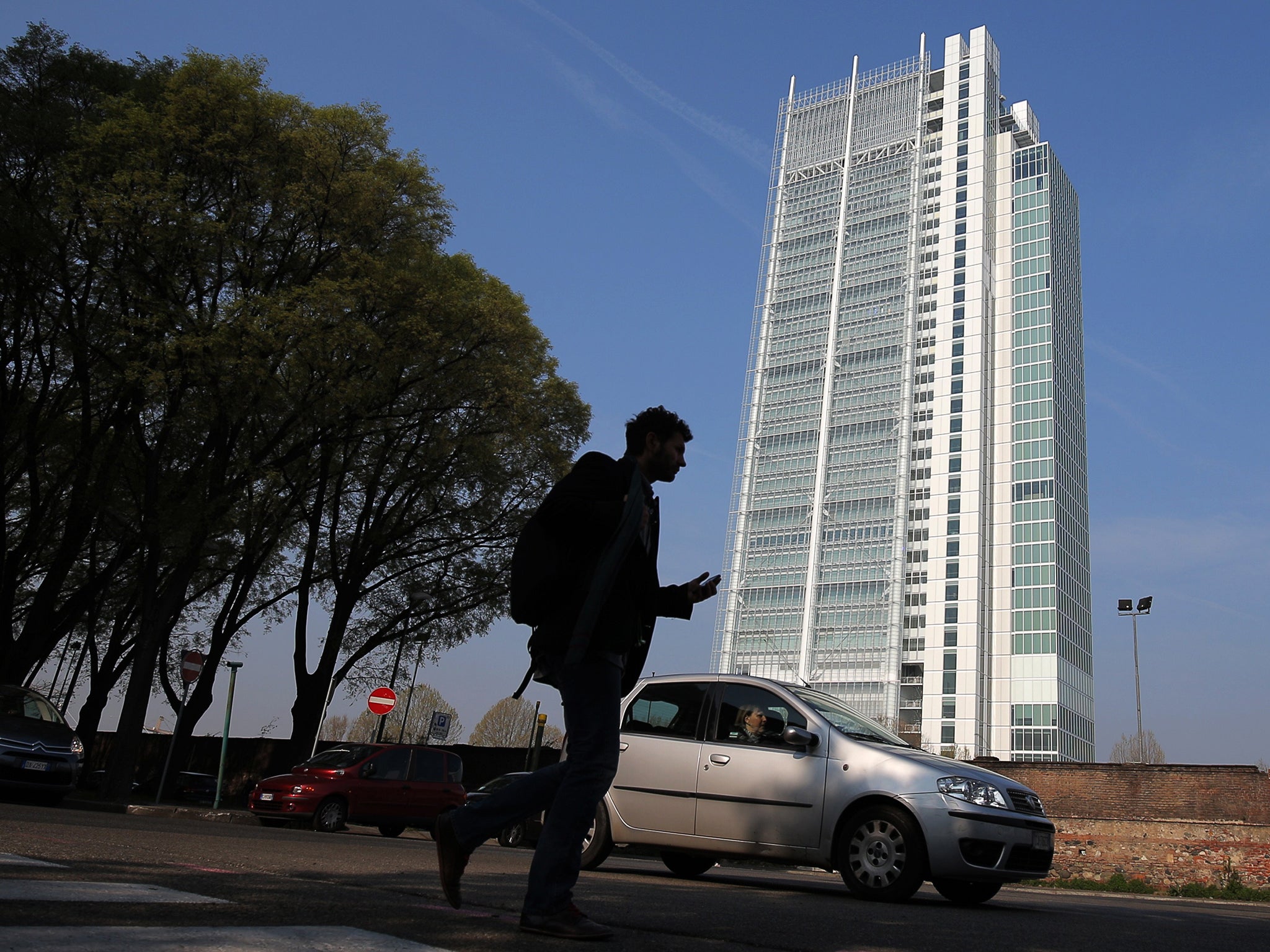Cold and faceless banks just want to be loved and trusted
Would you share your PIN with a group of strangers? That’s exactly what Chris Blackhurst was asked to do at a meeting with a banking giant in Milan


There was silence, then nervous laughter. The speaker, at a bankers’ conference, was asking the audience to write down their PIN numbers on a piece of paper, fold it, and put it into a bowl with all the others. They did as they were told, somewhat anxiously. The speaker was Dr Tiffany Watt Smith, a cultural historian at Queen Mary University of London and author of The Book of Human Emotions. We were at an event last week in Milan organised by the Italian banking giant Intesa Sanpaolo for its senior international staff.
The title for the day was “Moving Conversations – The Bonding Power of Emotion” and it was quite unlike any bank gathering I’ve ever been to. All credit to Intesa Sanpaolo for that. What Watt Smith and myself were talking about was how to better connect with people – with clients, stakeholders, media, anyone.
We were joined on the platform by an array of talent from the fields of human behaviour, neuroscience, branding, but also from the creative industries, from the arts, graphic design, composing music, filmmaking and novel-writing. The point was that none of us at the front worked in financial services, we were not bankers. But, in our own disciplines, we knew how to tell stories, to draw on emotion to get our messages across.
Even though the session was conducted entirely in English, there was a definite, underlying Italian aspect. Indeed, I wondered if a UK bank would ever do this. In Italy, story-telling and emotion go hand in hand. The latter is never far away, and is often evident. In the UK, by contrast, we’re frequently taught to hide our feelings, and certainly that is the case in banking – we do not expect our bankers to display anger, upset, joy, excitement, desire. Crucially, as a result, they can struggle too, to win in us that other sensation of trust.
Rightly, Intesa Sanpaolo sees itself as a trusted financial adviser. The only way to achieve that is for the customer to believe the bank is on its side, and for that to occur there has to be a shared connection, they must see the company as human, as understanding and appreciating them and their needs. That’s all very well, but we also live in a ferociously crowded, frantic, noisy age. Content is everywhere, and it’s there 24 hours, every single day. The daily chatter is incessant. We’re being targeted all the time – via TV screens, radios, phones, tablets, laptops, terminals, posters, LED displays. It’s constant and never-ending.
With two million pieces of information going up online each day, if they wish their products and services to be noticed, companies have to achieve cut through: they must reach people, and when they do, they must be believed. That requires whatever they say to carry authenticity, and that means not suppressing, but sharing, emotions.
A corporation that is cold and faceless is not going to gain our trust. One that is warm and appreciative, that as humans we can relate to, and wish to associate with, will succeed. It sounds simple in theory, but it isn’t in practice. How to do so, and to be trusted, and not to be dismissed as false or insincere, means being open and honest. Those are not words normally associated with a bank.
It starts with the first contact, with the automated phone answer. That’s not a real person, but a robotic, uncaring voice. It carries on in the formal, stuffy branch, with its queues and machines, and corporate notices. And in the interviews and meetings, where the person on the other side of the desk is not behaving like a person at all but ticking boxes and going through the motions.
Then, too, in their advertising and marketing, and in their dealings with journalists and in public relations. If they’re to receive our trust, if we’re to allow them to manage our money, the bankers need to do much better, they have to tell their story effectively, to understand, and draw on, human emotions.
They do it in their private lives of course, with their families and friends and behind the scenes with their colleagues, but something often goes missing when they engage with the outside world. That’s why Intesa Sanpaolo had asked the likes of Gigi Piola, a star TV commercial director; Richard Mason, a best-selling novelist; Danis Tanovic, an Oscar-winning film director; and Massimo Nunzi, a leading music composer and trumpet player, to speak about their work and how they use emotion to tell a story.
All the speeches were aimed at building trust. In her talk, Watt Smith contrasted cultural approaches. In the west, we rely on “a behaviourist model … we develop trust when we are rewarded for trusting someone – we buy their bread, we eat one slice and are not poisoned, we go back and buy their meat. In this model, trust emerges from calculations based on evidence.”
In the east, however, trust emerges out of relationships based around concern and care. In Korea, this is known as maum. Central to maum is a concept known as woori or “we-ness”, a sense of togetherness – so woori occurs when people share meals or sing together.
Woori creates comfort, but also the obligation to care about and prioritise the interests of others in the group. “In this space of ‘we-ness’ and mutual concern, trust is thought to arise.”
Other eastern cultures, said Watt Smith, have similar concepts. In China, guanxi describes the web of interpersonal connections through which social obligations might arise. In Japan, amae describes the sense of absolute dependency that children feel towards their parents, but that employees can also have towards their boss – a dependency that might seem quite unappealing to those brought up celebrating western individualism, like me, but which is thought to give rise to feelings of intense trust.
At the end, Watt Smith looked at the bowl with the all-important PIN numbers inside. The bankers weren’t happy. Then, she got a jug of water, and poured the water into the bowl, reducing the paper to mush. Cue relief all round.
She’d asked them to trust her, and they felt awkward – same as how their customers can feel.
Join our commenting forum
Join thought-provoking conversations, follow other Independent readers and see their replies
Comments